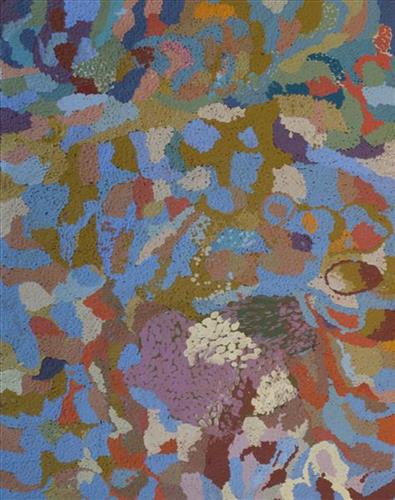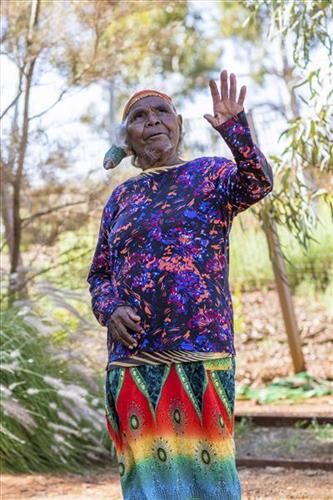111581649444
Wantili
“My ngurra (home Country), Wantili area. [Points to linear forms] Sandhill, sandhill, sandhill everywhere. Claypan there, in the middle. Good place for swimming and drinking, for hunting little kangaroo. When no water [we would] go to Well, when there rain we stay there at Wantili. Everywhere, we been walking everywhere.
Near to Wantili [there’s a] road going Kayili (North). Long time [ago] only horses and cattle [travelled along that road], going Meekatharra and back in the cold time, gone right up to Jijai Bore. Half way, when he see water at Wantili, that mob would camp one night, bullock eating all the grass and mens drinking water. One Martu been working with that mob, droving bullock. Every time he been give us meat, all the pujiman (nomadic bush dwellers).”
Wantili is dominated by claypans surrounded by tuwa (sandhills). Following rain the claypans are filled with water, with the overflow from nearby waterholes flowing to Wantili. At that time, Wantili becomes an important place for obtaining fresh water for drinking and bathing. Wantili is significant for the fact that at this site Kartujarra, Manyjilyjarra, Putujarra and Warnman people would all come together for ceremonies. Many jiwa (stones used by women for grinding seeds) from these times can still be found there today.




